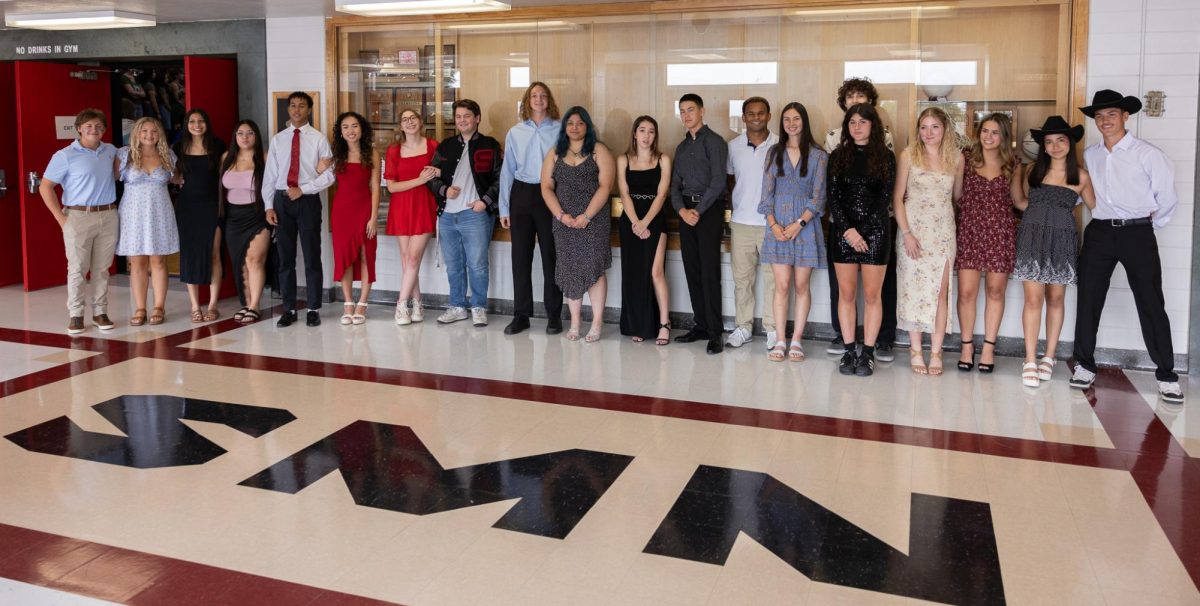District board meeting summary Nov. 10
The following is a recap of the special Board of Education meeting, where guest speakers provided information regarding gating criteria, transitioning back to remote-only learning, and recent effects the pandemic has had on staffing
November 18, 2020
Johnson County Department of Health and Environment chief epidemiologist Elizabeth Holzschuh spoke on gating criteria and transmission rates of Covid-19 in Johnson County as a result of opening schools back up.
“As we’ve gone through the first several months of schools being open in our community, we’ve continued to see this pattern of not a lot of [Covid-19] transmission in schools,” Holzschuh said.
However, since Halloween, positive cases in the community have increased dramatically. Case counts went from about 100 a day, gradually increasing until Nov. 10, which was the first day of over 400 positive cases reported. Holzschuh wished to stress that this sudden increase in cases was not caused by transmissions in schools.
“I still stand by the fact that this is not due to kids in schools, it’s not due to staff in schools,” Holzschuh said, “School buildings, you guys have created an exceptionally safe environment where that transmission is not occurring.”
The spike in cases has been caused mainly by social gatherings and events within the community.
Chief of student services Dr. Christy Ziegler provided information on the district Data Dashboard, regarding effects of the active isolation and active quarantine in SMSD as well as in Johnson County.
- 1.7% of students that are currently attending schools in person have tested positive based on reports from Nov. 2-8
- 9.0% positive based on students tested in a 2 week period in SMSD
- 14.2% positive based on those tested in a 2 week period in Johnson County
Shelby Rebeck, health services director, discussed contact tracing and considerations for transitioning back to remote-only learning. She noted the importance of personal responsibility in order for contact tracing to work effectively.
Rebeck compared the three main components that the district relies on for effective contact tracing to a three-legged stool.
“The county health department is one of those legs, Shawnee Mission School District is the other leg, and then our families are that other leg,” Rebeck said. If one component is unable to work properly due to being overwhelmed by the amount of positive cases within the community, or is not cooperating, the stool will collapse.
Associate superintendent of human resources Dr. Michael Schumacher talked about how SMSD staffing is being affected by the pandemic. The number of substitutes available is decreasing, and the amount of staff retirements, resignations, staff taking leave and staff in isolation and quarantine has been on the rise. Many steps are being taken to fill vacant positions. These steps include:
- Kelly Educational Staffing subs work the entire day (No breaks/plan).
- Part-time teachers voluntarily work additional time with compensation.
- Specialized staff members (when possible) cover individual classes.
- Full-time teachers (when possible) cover a class during their plan time.
- Educational Aides and Paras cover substitute vacancies (If licensed).
- Administrators cover substitute vacancies
Susan Rome, Johnson County Mental Health Center Deputy Director, reported increasing rates of mental health contacts and use of crisis services, which are up by 35%. Rates of death by suicide in Johnson County however have not increased or decreased in the past year.
“I think it’s important to note that this is a stressful time for kids and adults,” Rome stated. “and I think no matter whether you’re at home or at school, there’s going to be some degree of stress in this particular time.”
Rome did acknowledge concerns about how those rates would be affected as the pandemic continues, and the levels of stress that come with it. Regarding transitioning from hybrid back to remote learning, Rome stated that hopefully the change won’t be too hard on students since they already have a general understanding of how remote works.
“What we do know is [that] kids generally are incredibly resilient,” Rome said. “If I can find a silver lining to the possibility of remote, it’s that kids have done it before.”



